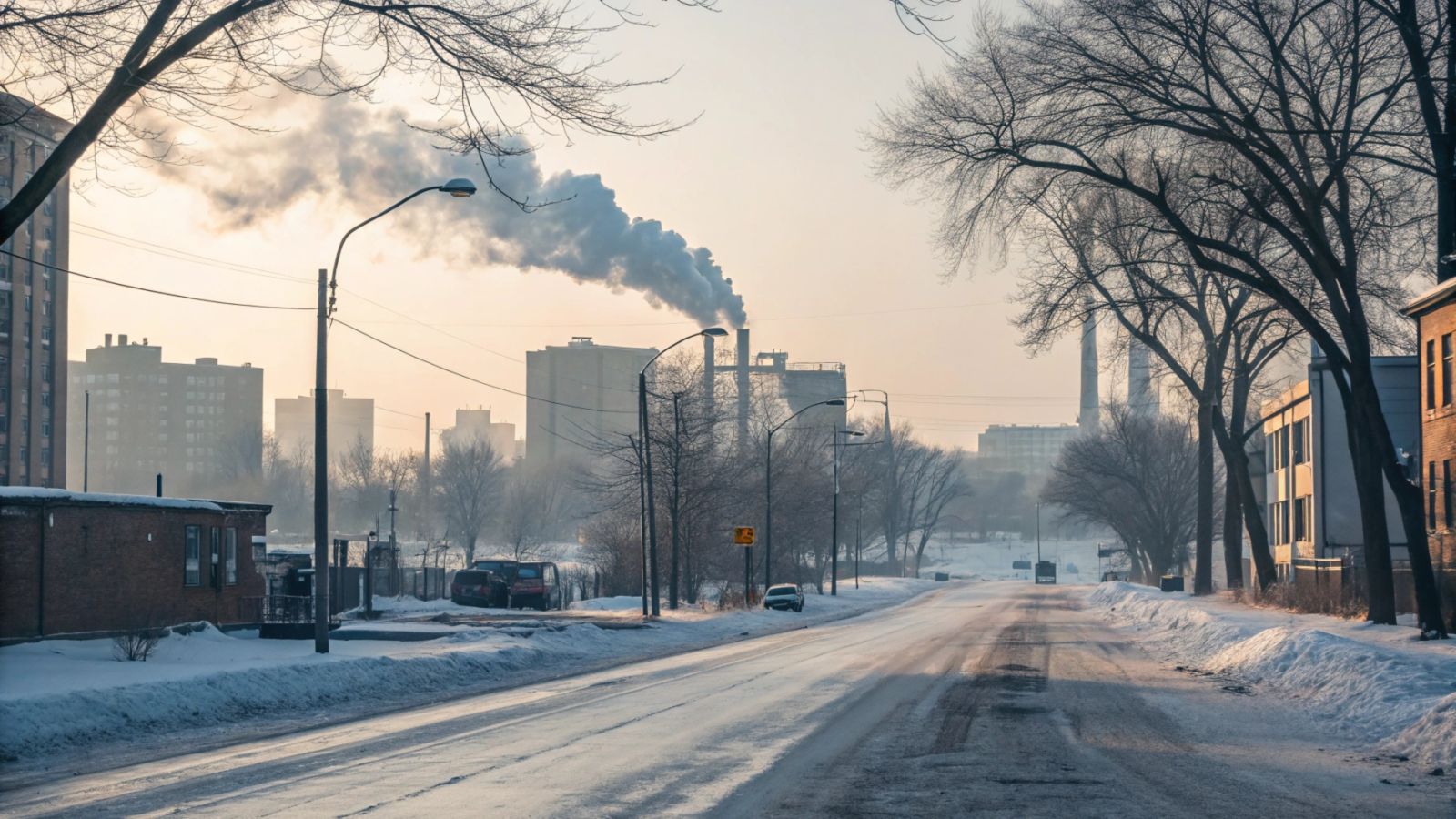An "industrial snow" recently covered several regions: what is it? ❄️
Published by Cédric,
Article author: Cédric DEPOND
Source: Météo Contact
Other Languages: FR, DE, ES, PT
Article author: Cédric DEPOND
Source: Météo Contact
Other Languages: FR, DE, ES, PT
Follow us on Google News (click on ☆)

Unlike classic snow, which forms in high-altitude clouds, industrial snow forms near the ground under specific conditions. It requires cold, humid air laden with fine particles from pollution. These particles act as condensation nuclei, allowing moisture to freeze and form snowflakes. This process often occurs near industrial or urban areas, where pollution is more concentrated.
Anticyclonic conditions, with calm weather and a thermal inversion, favor this phenomenon. Cold air remains trapped near the ground, while pollutants and humidity accumulate. When these elements combine, tiny snowflakes form and fall locally, creating an unexpected white blanket.
This snow, although similar to natural snow, has notable differences. Its flakes are smaller and needle-shaped, unlike classic hexagonal flakes. Additionally, it can adhere to surfaces where ordinary snow would not stick, giving urban landscapes a unique appearance.
Although spectacular, industrial snow is not without risks. Composed of pollutant particles, it may contain harmful substances. It is therefore advised not to consume or handle it without caution. Experts recommend washing hands after prolonged contact.

Localized industrial snow seen from satellite in the Netherlands.
This phenomenon, although rare, is not exceptional. It occurs almost every year in certain regions, especially near industrial areas. However, its formation remains difficult to predict, as it depends on local factors such as pollution levels and precise weather conditions.
Industrial snow is a tangible reminder of human impact on the environment. It illustrates how industrial and urban activities can even influence weather phenomena, creating situations that are as surprising as they are concerning.
What is a thermal inversion?
A thermal inversion is a meteorological phenomenon where air temperature increases with altitude, contrary to the usual situation. Normally, air cools as it rises, but during an inversion, a layer of warm air traps cold air near the ground.
This phenomenon often occurs in winter under an anticyclone, when the sky is clear and the wind is weak. At night, the ground cools rapidly, in turn cooling the air near the surface. Above, a layer of warmer air prevents the dispersion of cold air.
Thermal inversions have visible consequences, such as fog formation or pollution stagnation. They create a "lid" that traps pollutant particles near the ground, favoring phenomena like industrial snow.
A thermal inversion is thus a situation where cold air is trapped near the ground by a layer of warmer air, influencing local weather and air quality.